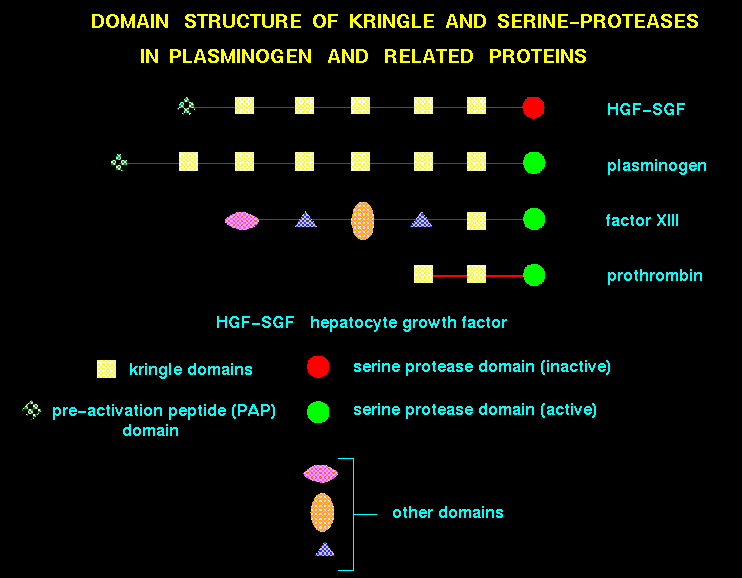 Domains in Proteins
Domains in Proteins
![]() Index to Course Material
Index to Course Material
![]() Index to Section 10
Index to Section 10
![]() Identification of Domains
Identification of Domains
Even as the first structures were solved, proteins were found to have
structurally distinct lobes (Phillips, 1966).
However, the term "domain" was not assigned to compactly folded structures
until later when Wetlaufer (1973) recognised it to be a common feature in
unrelated proteins.
Since then, it has become clear that domains form an important level
in the hierarchical organisation of the three-dimensional structure of
globular proteins, although not all proteins can be described as multidomain
structures.
Domains of recently evolved proteins are frequently encoded by exons, reflecting gene fusion of simpler modules. For example, in the case of hepatocyte growth factors and plasminogens, a number of kringle domains are present.

For a recent review on domain insertion, see Russell (1994).
Domain swapping between two protomers is not uncommon (for example in the
case of diphtheria toxin (Bennet
Last updated 11th Jun '96